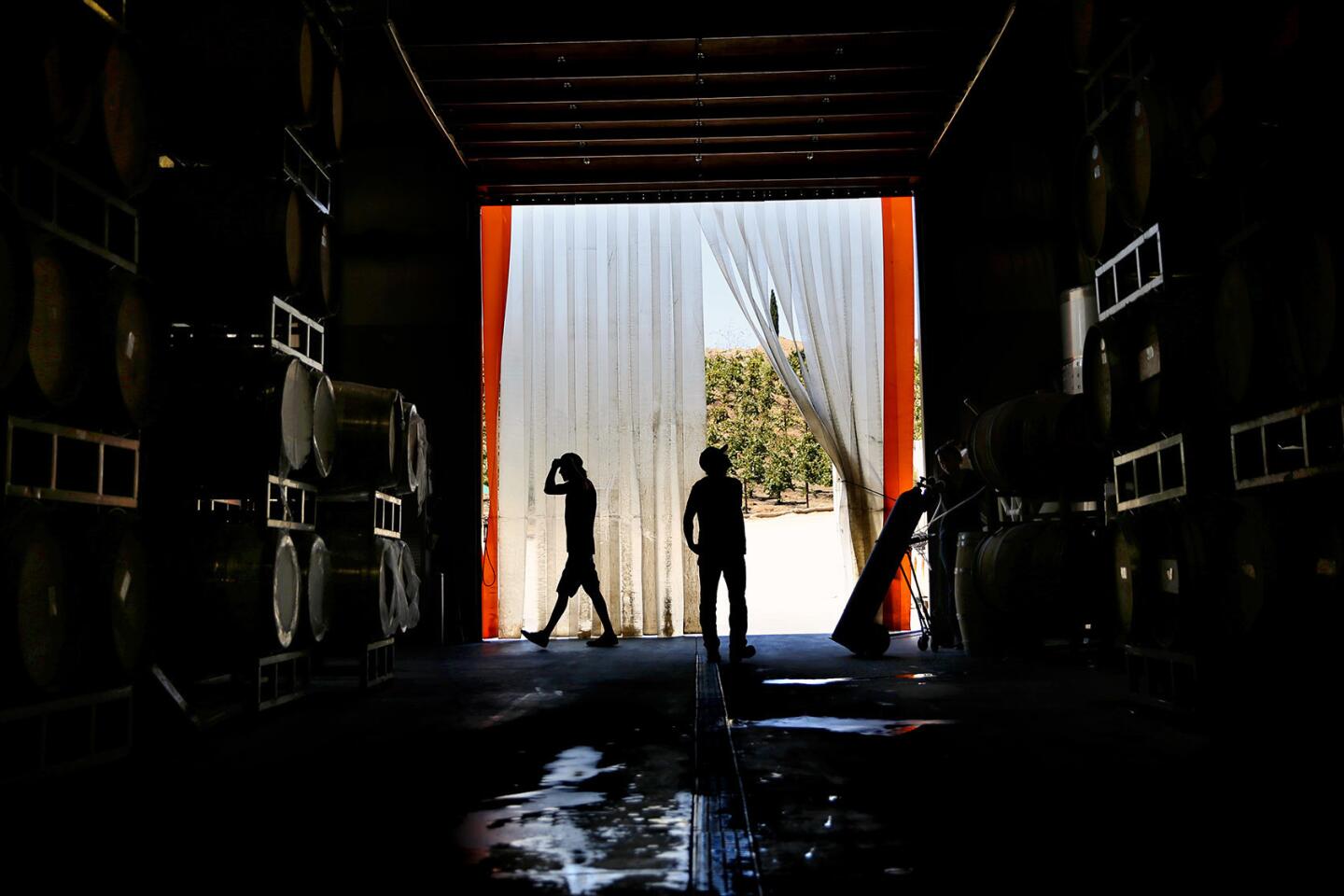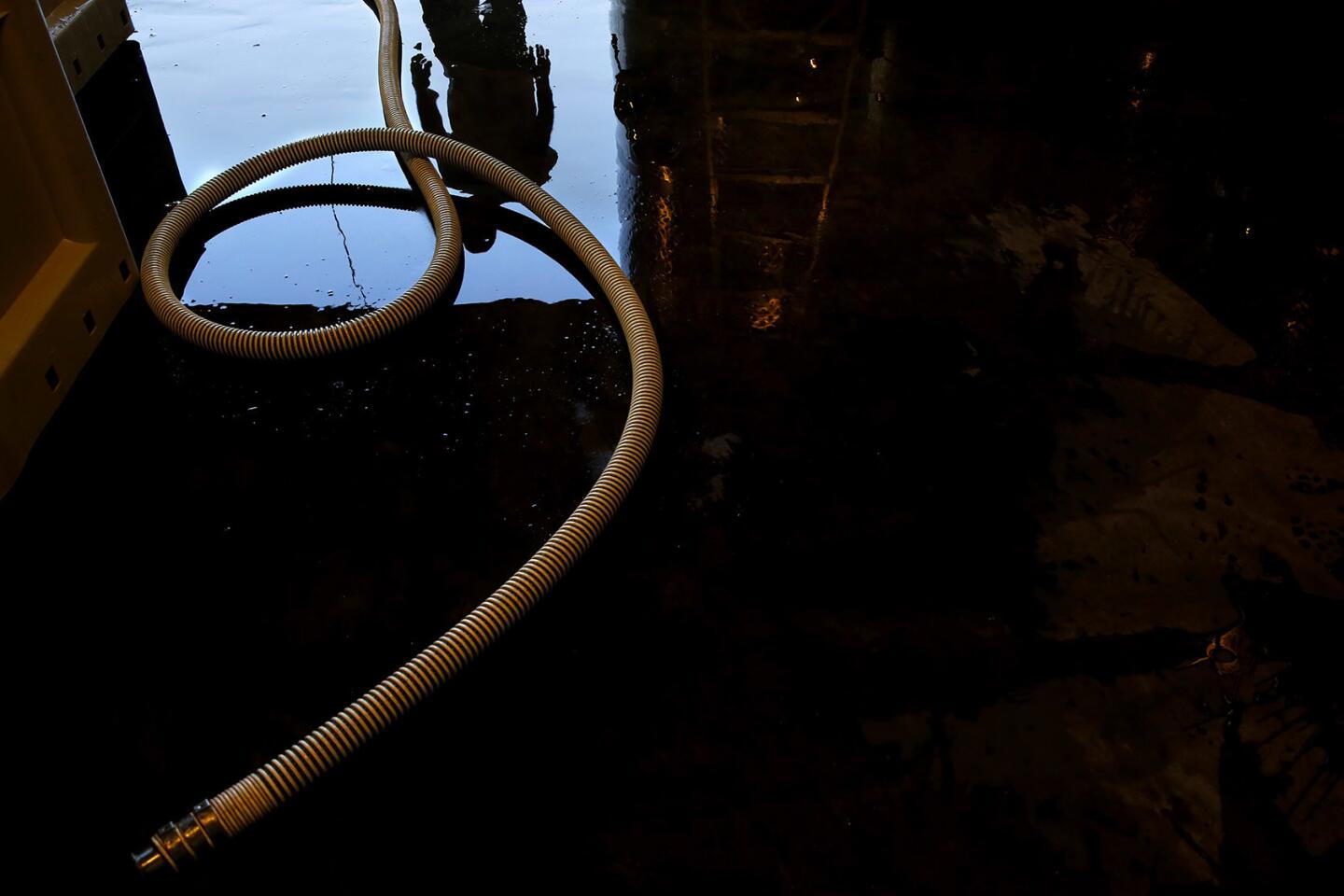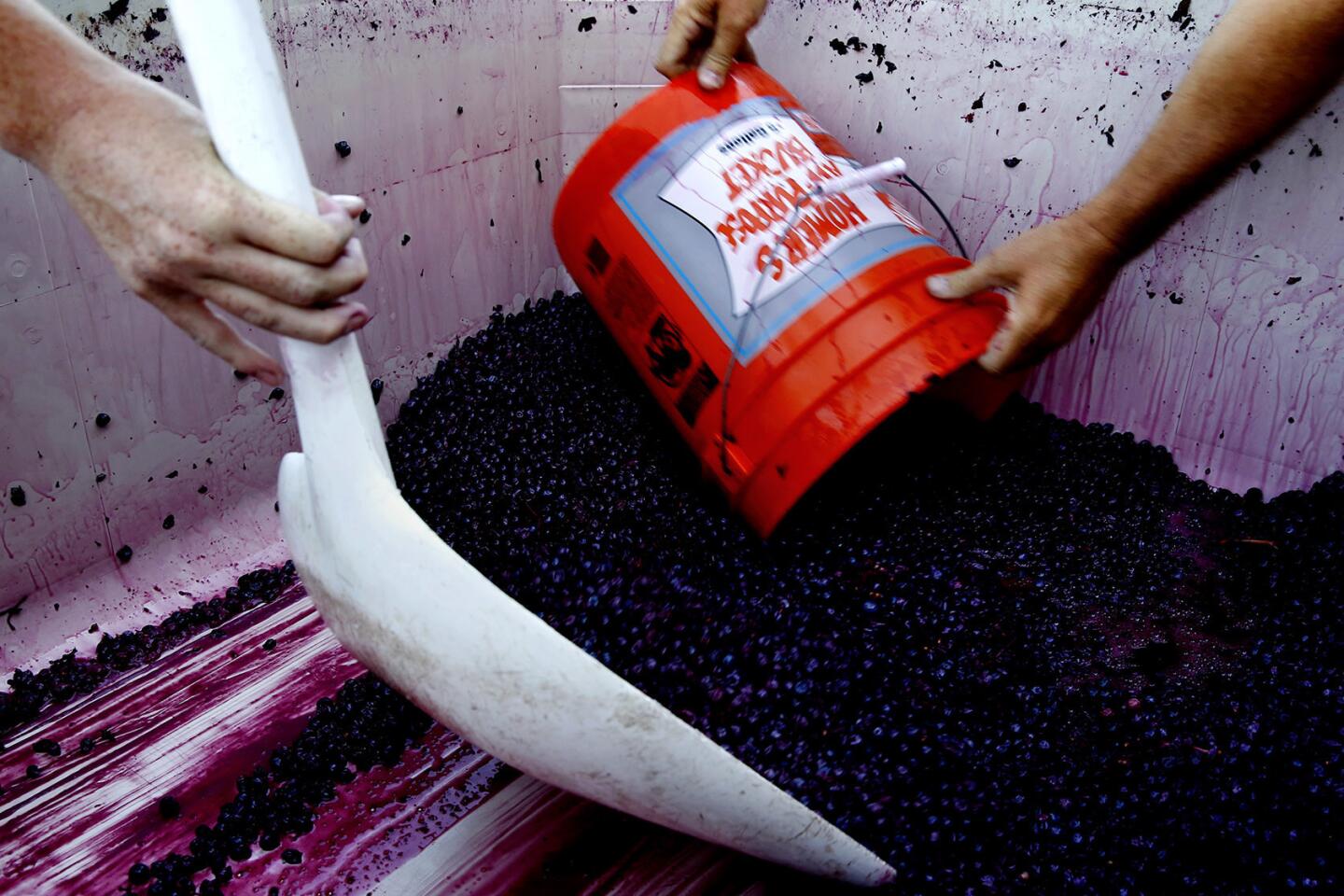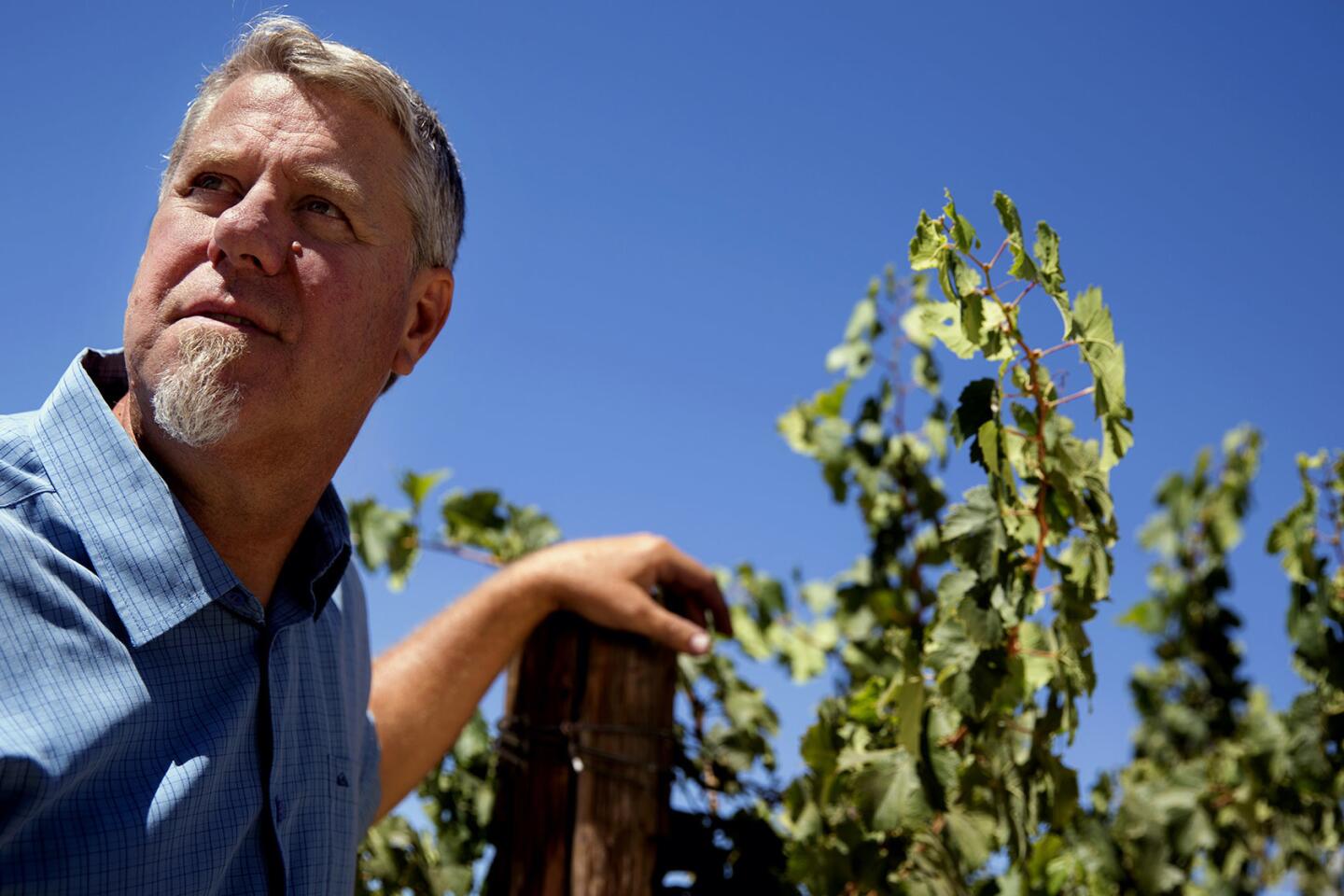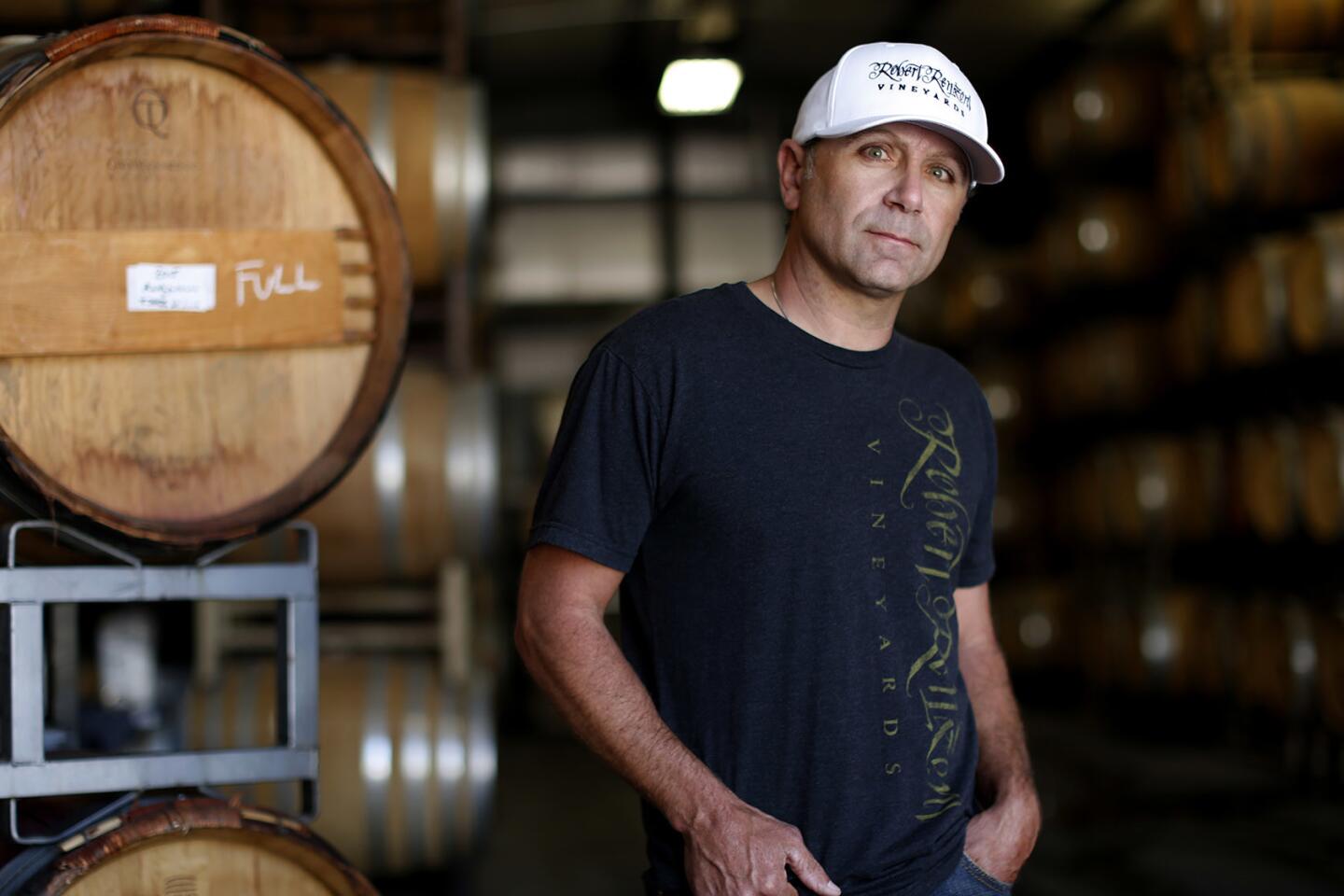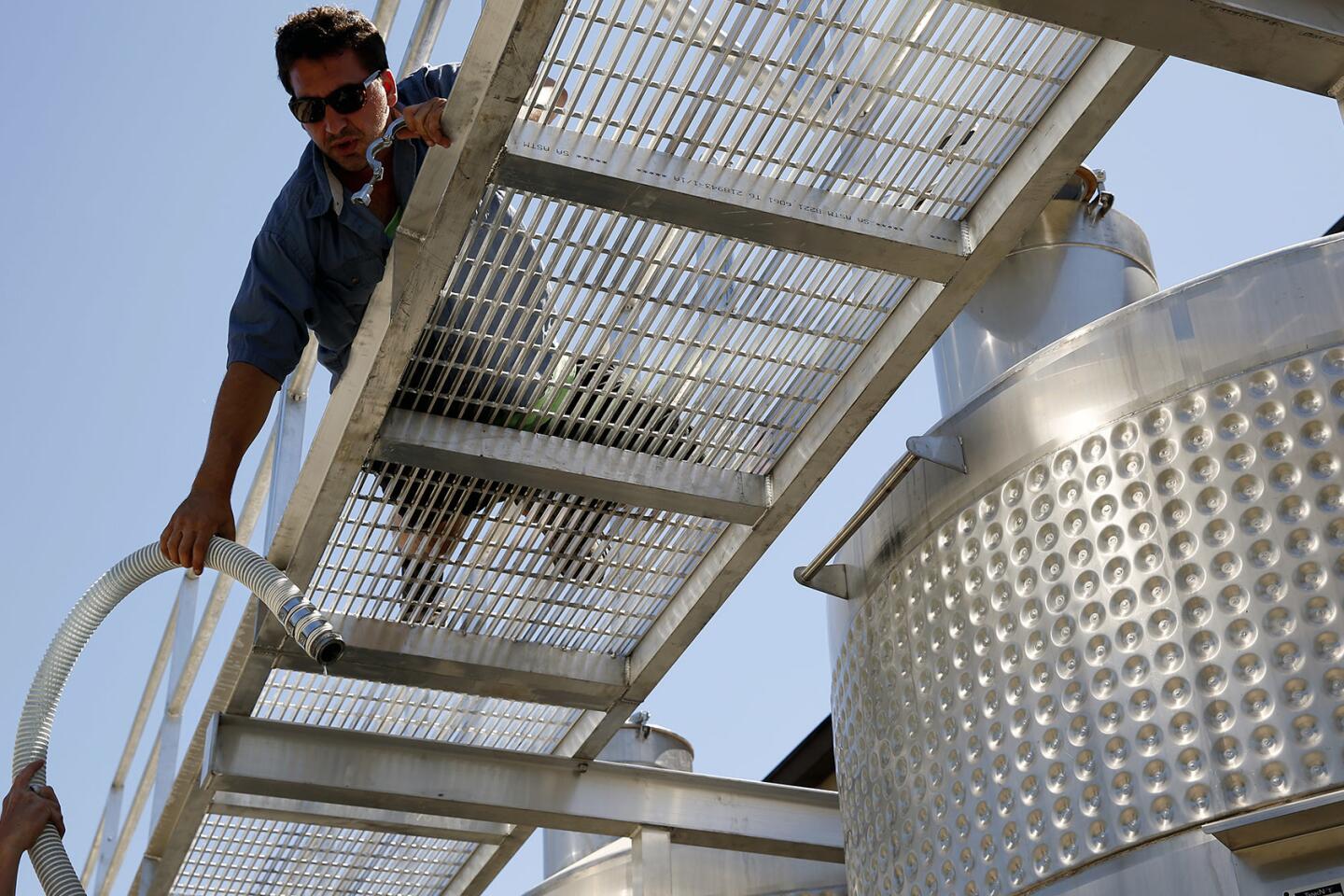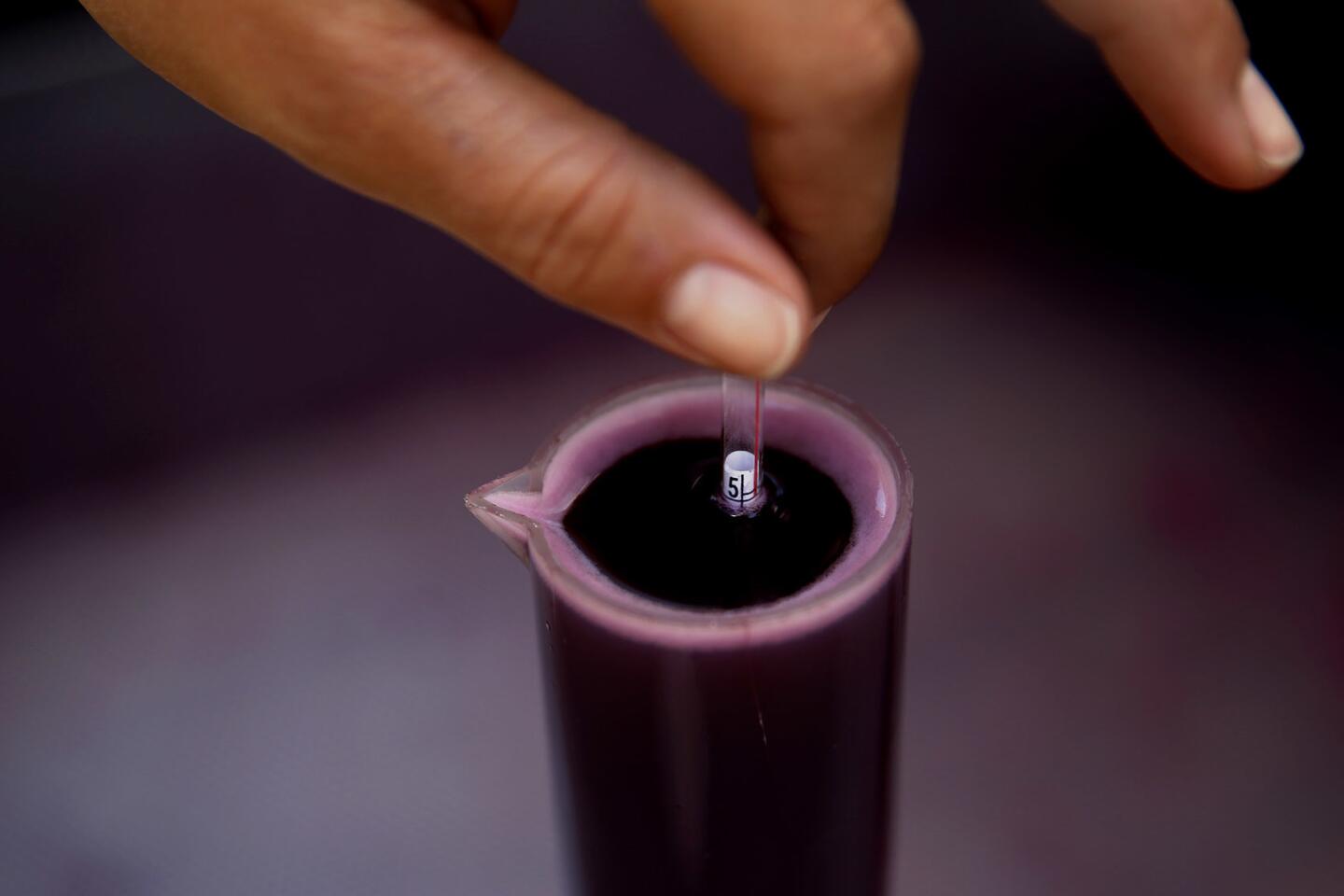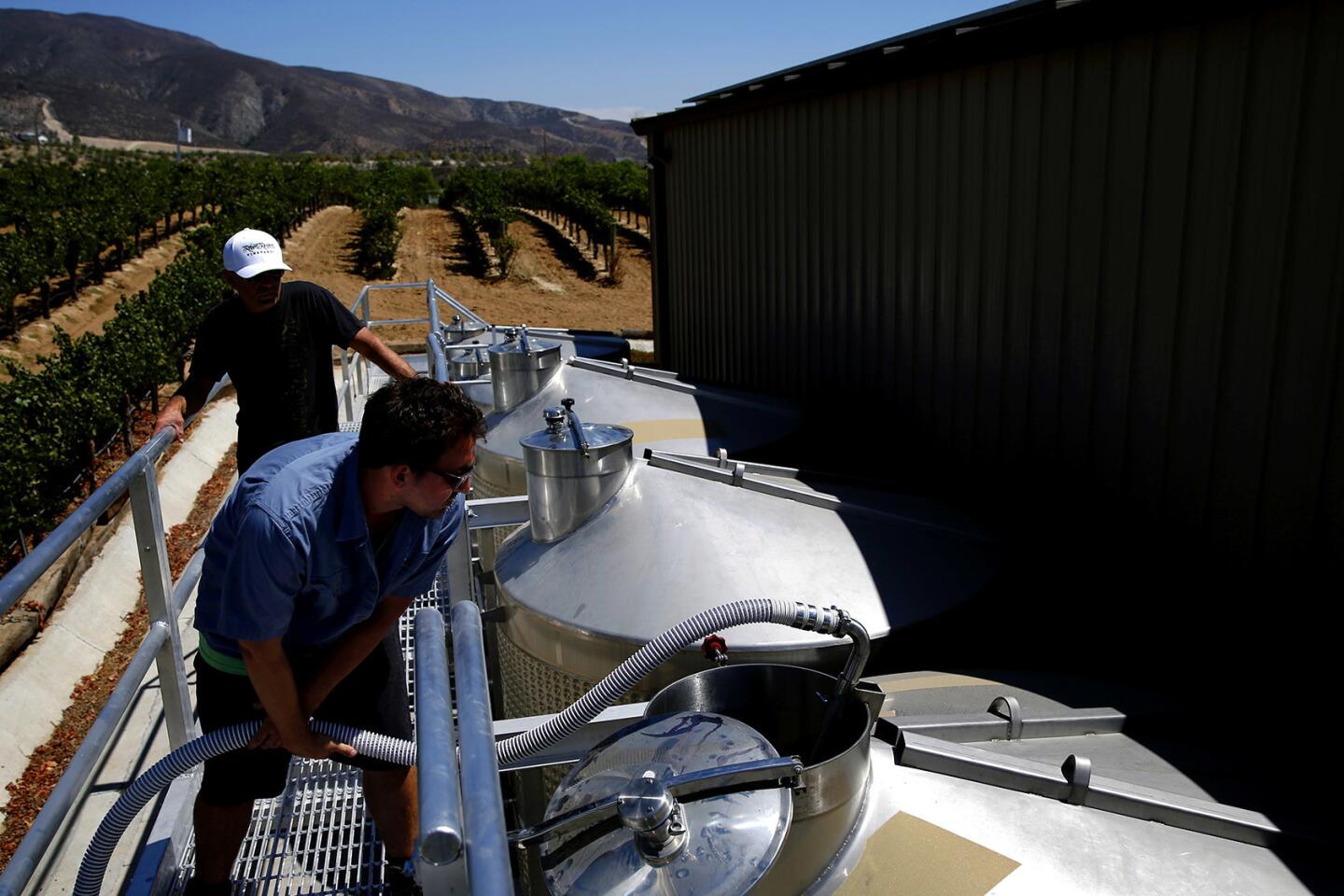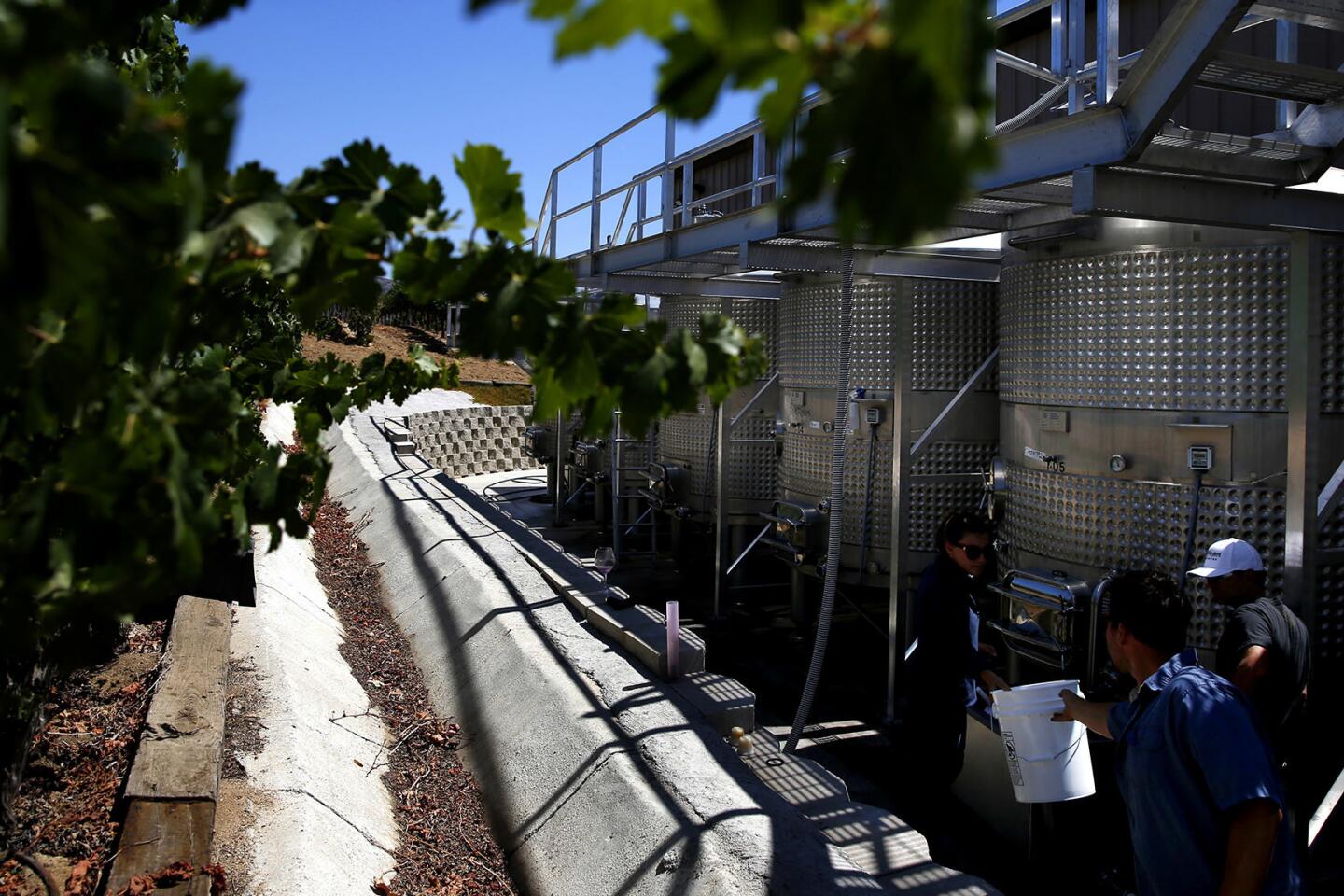Temecula winemakers are sick of the haters. They want to change your mind about SoCal wine
For many wine sophisticates, “Southern California wine” is an oxymoron.
The criticisms of the wines, usually produced in Temecula, are vast: They’re too sweet, the aromas are funky, they lack the complexity and flavor found in wines from Napa or even Paso Robles.
For the record:
4:52 p.m. May 24, 2019An earlier version of this article stated that South Coast is Temecula Valley’s largest producer at 50,000 cases a year; it is the second largest producer at 65,000 cases a year.
“When I tell Central Coast winemakers that I’m going south to explore Temecula wines, they say, ‘Well that sucks. I’m so sorry,’ ” said Matt Kettmann, contributing editor for Wine Enthusiast Magazine, who rates central and south coast wines for the publication. “But no one ever really tries the wine.”
Now a core group of Temecula winemakers is determined to challenge the longstanding belief that the region is only good for bachelorette limo tasting tours and subpar wine. Five wineries have joined forces to beat back the persistent jeers leveled at Temecula Valley’s 33,000-acre American Viticultural Area, located about 85 miles southeast of Los Angeles.
The group has invested in a machine to carefully analyze the wines’ chemistry, uprooted old grape-growing methods in favor of ones better suited for Temecula’s terrain and are pushing for well-known wine reviewers to come try their wines — and set aside whatever prejudices they might hold.
For many oenophiles, those preconceived notions go way back.
“Some of the Temecula wines became known for flavors that were not all that appealing,” said James Laube, senior editor for Wine Spectator. The late Terrence Clancy, a prominent wine industry executive, “said they smelled like burning tires. A rotten vegetable cabbagey smell. They had problems with very high pHs.”
Those high pH levels are caused by Temecula’s hotter climate and drier soil, which can cause spikes related to lower acid levels -- although soil science is a debated topic, and elevated pH numbers can vex other regions. Optimal acidity levels lend wine a desired crisp, tart quality.
“We weren’t getting balanced phenolic maturity to develop the flavors, so we had to hang our fruit out there much longer to get that ripeness,” said Nicholas Palumbo, owner of Temecula’s Palumbo Family Vineyards & Winery. “The wines in general were out of balance.”
Curiously, it was an insect that began to turn the region’s fortunes around. The glassy-winged sharpshooter decimated nearly 40% of Temecula’s vineyards beginning in the late 1990s.
The clear-cut devastation seemed to dictate a choice: “Winemakers had to either get out of the game, or get committed to changing it,” Palumbo said.
Winemakers began to tame the pH problem with improved farming methods: canopy management, proper vine balance and better irrigation practices. They also began planting more Italian, Rhone and Spanish varietals suited to Temecula’s Mediterranean climate.
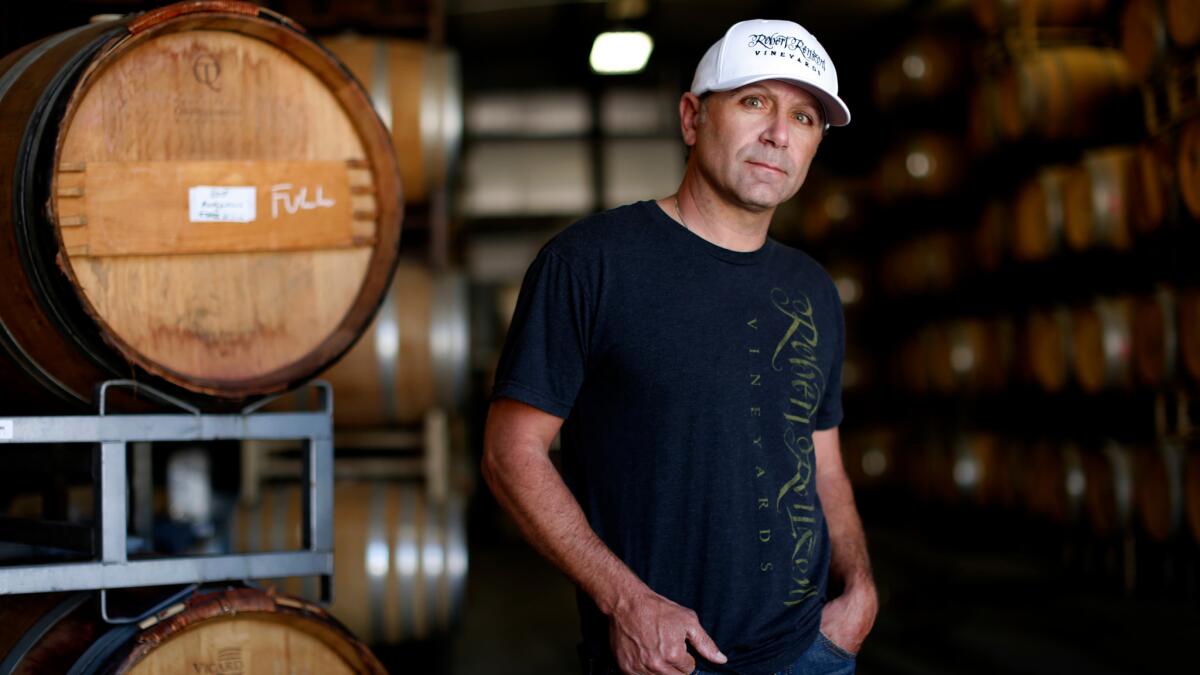
Creating “wine by the numbers” also helped. Last year the Hart, Doffo, Vindemia and Palumbo wineries jointly purchased a $58,000 Oenofoss machine that analyzes wine chemistry. The microwave-size device lives at South Coast Winery & Spa where an oenologist keeps it calibrated.
“With the Napa guys, the numbers may be perfect, and the wine then comes out perfect,” said Jim Hart, whose parents, Joe and Nancy, launched Hart Winery in 1980. “Here, we have to do more work.”
That work might include such post-harvest fixes as watering the wine back to decrease sugars and acid adjustment, commonly done by winemakers.
Wine drinkers said they have noticed an improvement.
Sue Simmons, a retired asset manager who lives in downtown Los Angeles, recalled her reaction when friends gave her some Temecula wines about five years ago.
“Are you joking -- why are you pushing this on me?” said Simmons, 65, who had tasted Temecula’s offerings in the late 1980s and found the wines “thin” with “no depth of flavor -- they were not attractive.”
This time around, the wines “were just as good as anything I’ve had from Europe or Northern California,” she said.
Despite the past stigma, Temecula Valley’s terroir is generally well suited for growing grapes. Its high-angled sun is largely saved by cool coastal air drawn through mountainous gaps by low-pressure systems. The setup creates a generous temperature shift, chilling hot grapes at night. Vines are rooted in granitic, well-drained soils.
Temecula winemakers said the region has now hit a consistent quality mark, given numerous and varied awards. Boosters most often tout South Coast Winery’s “California Winery of the Year” four-time win, spanning 2008 to 2016, bestowed by the California State Fair. South Coast is Temecula Valley’s second-largest producer at 65,000 cases a year.
But Laube said he is not convinced that state fair awards bestow significant legitimacy.
“The question is, does everybody get a medal? Does it mean much in Napa or in the broader wine world? I don’t think so,” he said.
Temecula Valley wines have been rated, most often by Wine Enthusiast. The publication has reviewed 80 Temecula wines in the last two years with nearly half the wines receiving scores of 90 points or higher, “which is a decent showing,” Kettmann said.
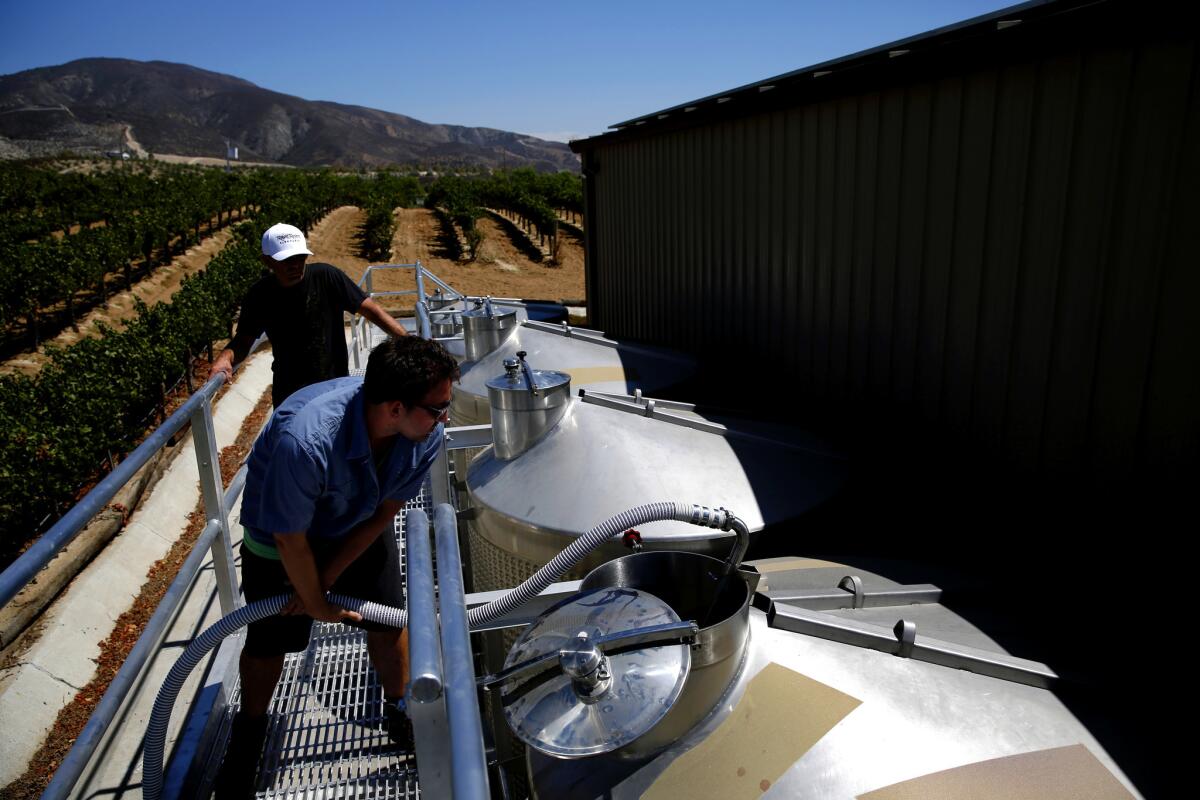
In years further back, Temecula wines received “some pretty dismal scores,” he added.
Laube, who tastes about 5,000 wines a year, has not visited the region to rate the wines, which has some Temecula winemakers fuming. He said the omission was “not deliberate” and that he would visit the region soon.
“Temecula wines are mostly a local phenomenon, but the region is moving in a positive direction,” he said. “Its moment is coming.”
Even Napa wasn’t always the heralded wine region it is today. It had its own moment in 1976 during the so-called Judgment of Paris, when its wines were blind tasted against French wines and, to the shock of wine snobs everywhere, bested them. Before then, Napa was largely mocked as a cheap jug wine region.
California’s $114-billion wine industry harbors an inherent pecking order among its 138 American Viticultural Areas. Stellar central coast regions (Paso Robles, Santa Barbara) were underdogs 35 years ago.
“Napa used to rip on Paso Robles,” Kettmann said. “But now Paso Robles rips on other regions. It’s a funny game.
“Actually, everyone still rips on everyone.”
Temecula’s formidable wine tourism engine seems especially susceptible to mockery. Serious drinkers said they abhor weekend visits to Temecula, with its jammed roads and packed tasting rooms. Leave Temecula to the middlebrow folks, some sniff, to quaff their “fruit bombs.”
The region hosts 2.7 million annual visitors who spend $696 million, most of it on wine-related activities, according to Visit Temecula Valley. Although there isn’t a breakout of how much total revenue the wineries pull in, the group says that the overall tourism figure has consistently risen during the last six years.
The region saw its first winery open in 1974, though wine grapes were first planted in Temecula Valley in 1820. Today there are 42 wineries, more than a third of which opened in the last decade. And there’s still room to grow: A master plan allows for 105 wineries.
Events, concerts and a revitalized Old Town augment the scene -- along with golf, hot air ballooning, weddings and Pechanga’s titanic casino. Twenty wineries have on-site restaurants, which are effectively banned in many popular California wine regions. Together, that means Temecula has been a big draw for Southern California tourists.

“Temecula is hitting on all cylinders,” said Ray Johnson, executive director of the Wine Business Institute. “And what’s wrong with giving people what they want? It’s just some of the cognoscenti who criticize the success of wine tourism.”
All of these factors help make Temecula a standout when it comes to direct wine sales in California.
Robert Renzoni of Robert Renzoni Vineyards & Winery, which produces 18,000 cases of wine each year, said he sells 300 cases a week out the tasting room door.
“When I talk numbers with winemakers from up north, their jaws hit the floor,” he said.
That’s great for the bottom line, but means that Temecula wines remain undiscovered for many oenophiles.
“Everyone bags on Temecula, but no one ever tries their wine,” Kettmann said, “because a lot of it never leaves Temecula.”
As for his expert opinion?
“Temecula is pretty hit and miss,” he said. “Some wines are solid, and some are as bad as you’ll find in any region.”
ALSO
You can now go wine tasting in a cave in Temecula
California wine country says goodbye to a crop-threatening moth
Tiny, ramshackle homestead cabins in the California desert are suddenly very attractive
